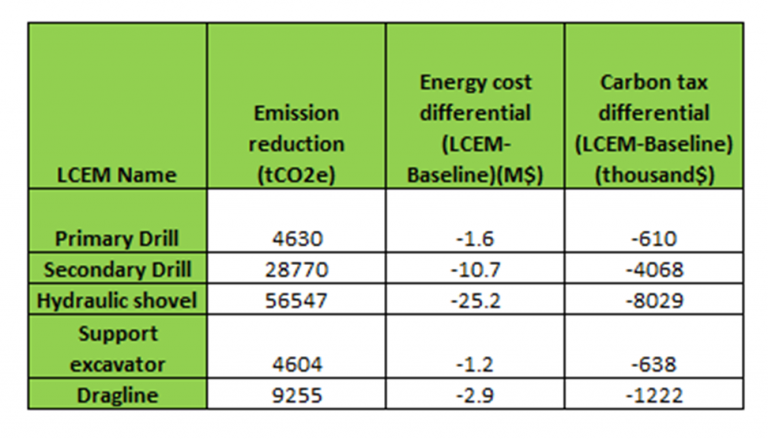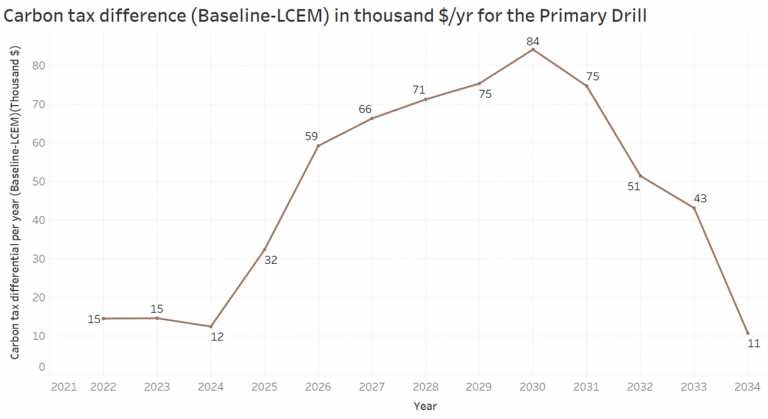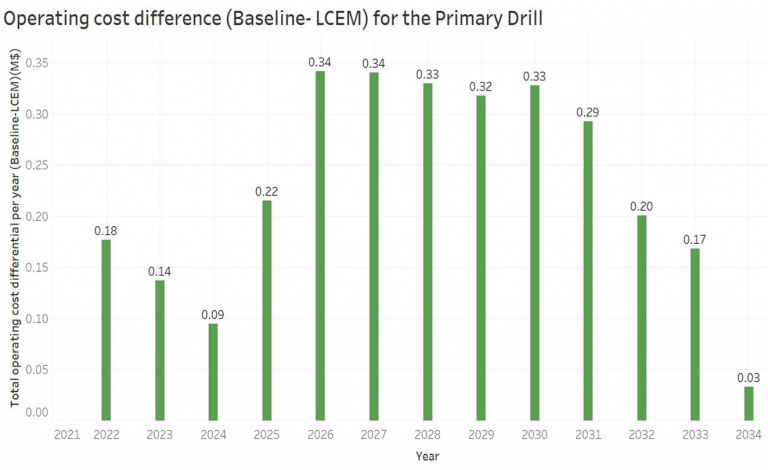Dusyant Kumar | MEL Candidate | Dec 17, 2021.
Mentor: Manish Soni, SysEne Consulting Inc.
Abstract
Low carbon electrification is a hot topic in the industrial decarbonization sector nowadays. The mining sector is one of the major sectors affected by increasing carbon taxes and feeling pressure to decarbonize its processes and operations. Mining companies and their stakeholders are looking for opportunities to reduce GHG emissions while keeping these new technology solutions cost-effective and efficient. The current capstone project is about finding the feasibility of replacing some of the fossil fuel-driven equipment of a mining facility with electric or battery-driven equipment by analyzing the industry’s available low-carbon electrification options. The challenge of the project is to meet the performance of existing equipment with the proposed LCE options without compromising the project’s schedule. A final cost-benefit analysis will be presented to the client to decide based on the result of the study.
Introduction
The current project is about finding out the feasibility of electric equipment replacing diesel-driven equipment for a mining facility in BC. Low carbon electrification is one of the options to select equipment to reduce GHG emissions.
GHG emission reduction is now mandatory for all sectors, and mining is one of the dominating sectors to work on this issue. The government of BC has taken many initiatives to support clients and stakeholders to reduce the carbon footprint from the industry. There is a great interest in mining companies to look for LCE opportunities and reduce their carbon footprint. Carbon capturing and energy efficiency measures are other options to reduce GHG emissions.
The current project analyses data for five equipment, Primary drill, Secondary drill, Hydraulic Shovel, Support excavator, and a Dragline. All these are heavy equipment with a massive amount of fuel consumption. The study covers the fuel consumption and carbon emission quantification for the baseline and low carbon electrification(LCE) cases. A cost-benefit analysis has been performed based on the vendor, client data, and calculation for the different costs associated with carbon emission, capital cost, operation and maintenance cost. Based on the cost-benefit analysis, a recommendation will be proposed to the client for further decision.
Methodology
.Operating hours data is received from the client and is considered the same for baseline and LCE cases. Equipment operating performance is known, and based on that, total diesel consumption and corresponding GHG emission have been calculated for 10 years of the mining operation. Similarly, electric equipment power consumption and GHG emission are calculated. from operating data. The client provides the cost of diesel equipment, and for electric equipment, final capital and handling cost will be provided by the equipment vendor Cost-benefit analysis has been performed by calculating the CO2 emission reduction, energy cost reduction, operating cost reduction and reported in the final project report.
Results and Discussion
.
Cost-benefit analysis has been performed based on the difference in the GHG emission reduction by LCEM compared to the baseline case. Total energy cost, carbon tax, and total cost difference (Operating and maintenance cost) have been calculated and presented in the study.
Individual equipment has different performance parameters and operating hours at the site; therefore, their results vary drastically for each equipment. GHG emission reduction for Primary drill is 4630 tCO2e through the life of mining, however for Secondary drill and hydraulic shovel the emission reduction is 28770 tCO2e and 56547 tCO2e, respectively. The carbon tax difference for Hydraulic Shovel and secondary drill is huge, and it saves about $8 million and $4 million, respectively, through the life of mining.
Heavy equipment saves more energy and cost, which is evident from the study. Each equipment is considered as a separate LCEM; however, all are shown in a summary sheet for reporting.


There is a change of pattern in the energy demand and the GHG emission, as the mining operation starts in the beginning, there is not much equipment on site, however in the mid of mining life (Year 4 to 7) are the most critical for emission and therefore the carbon levy.
Other possible methods to reduce GHG emissions can be energy efficiency measures. The results will depend on the equipment vendor’s data, which is crucial in deciding the results.

Conclusion
Depending on the vendor data the current calculation and analysis show that secondary drill and hydraulic shovels have a considerable saving for the carbon tax and energy consumption cost for the LCE options. In the long run, especially in the mid of the life of mining, the LCE measures will be more valuable.
Reduction in GHG emissions are significant for all the equipment, and as per the interest of the BC govt, client, and stakeholders in reducing GHG emission, the LCE measures are recommended to replace the diesel version of the equipment.
Contact
DUSYANT KUMAR
MEL-CEEN 2021 (UBC)
Email: dusyantcleanenergy@gmail.com
Phone: 7789970220
Website: https://www.linkedin.com/in/dusyantcleanenergy/